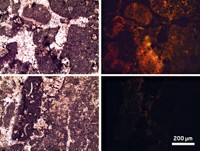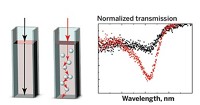Advertisement
Grab your lab coat. Let's get started
Welcome!
Welcome!
Create an account below to get 6 C&EN articles per month, receive newsletters and more - all free.
It seems this is your first time logging in online. Please enter the following information to continue.
As an ACS member you automatically get access to this site. All we need is few more details to create your reading experience.
Not you? Sign in with a different account.
Not you? Sign in with a different account.
ERROR 1
ERROR 1
ERROR 2
ERROR 2
ERROR 2
ERROR 2
ERROR 2
Password and Confirm password must match.
If you have an ACS member number, please enter it here so we can link this account to your membership. (optional)
ERROR 2
ACS values your privacy. By submitting your information, you are gaining access to C&EN and subscribing to our weekly newsletter. We use the information you provide to make your reading experience better, and we will never sell your data to third party members.
Analytical Chemistry
Nanoparticles Sense Ultralow Levels Of Toxic Ions
Sensor coated with tiny, striped particles can detect as few as 600 methylmercury cations per mL of water
by Lauren K. Wolf
September 17, 2012
| A version of this story appeared in
Volume 90, Issue 38
An electronic sensor coated with patterned nanoparticles can detect concentrations of the toxic ion methylmercury down to attomolar (10–18 M) levels in water (Nat. Mater., DOI: 10.1038/nmat3406). This detection limit—about 600 methylmercury cations per mL of solution—is far below what other analytical methods, such as atomic fluorescence spectroscopy, can achieve, according to the research team that designed the sensor. To fabricate the device, Bartosz A. Grzybowski of Northwestern University; Francesco Stellacci of the Swiss Federal Institute of Technology, Lausanne; and colleagues produced gold nanoparticles covered with alternating rows of short and long molecular bristles: n-hexanethiols and n-hexanethiols tipped with polyethylene glycol units. The team cast a film of the particles onto a glass substrate between two electrodes. When dipped into water containing methylmercury, the particles selectively trap the cations among their bristles. After the sensors are dried, the researchers measure this capture via an increase in conductance across the films. The researchers tested their sensors on water from Lake Michigan and on fish collected in Everglades National Park. The methylmercury levels determined from the sensor data agreed within error to published values for the lake and values measured by the U.S. Geological Survey for the fish.





Join the conversation
Contact the reporter
Submit a Letter to the Editor for publication
Engage with us on Twitter